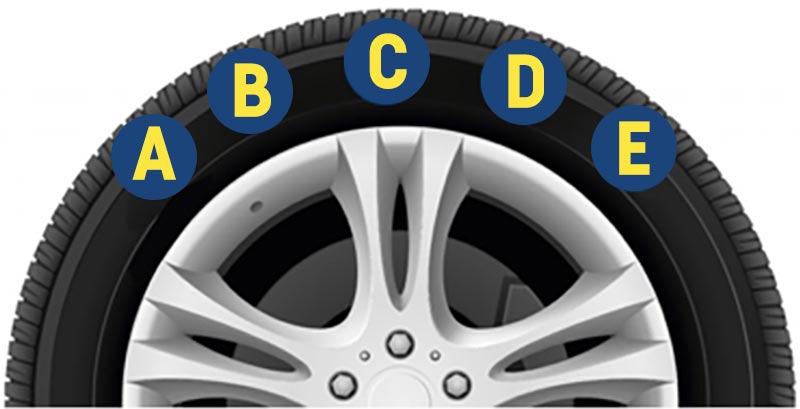
Tyre Teacher | Get Your Car Ready for Spring
Fuzz Townshend Tyre TeacherHooray! Springtime is here and with it comes not only bouncing bunny rabbits, leaping lambs and blossoming bulbs, but the sights and sounds of fun cars, of the type usually driven with a flourish by proud owners who may have been fettling their charges over the long winter months.
Of course, many ‘weekend’ cars may have been parked up for six months without a second thought. In all cases, it is vitally important that any car that has been laid up for an extended period of time should be given a thorough check over.
TYRES

Before doing anything else, give your car’s tyres a quick visual inspection to ensure that they have remained inflated. If they appear to be okay, check the pressures and inflate / deflate as necessary (some people inflate their car’s tyres beyond the normal pressure for the vehicle to help to reduce flat spots – it’s important not to drive on overinflated or underinflated tyres).
Thoroughly inspect the tyres for wear, cracks, bulges and any other damage which may have gone unnoticed. If the tyres are more than ten years of age, consider changing them; some categories of vehicle are prohibited by law from being driven on with tyres older than 10 years of age.
If your car’s tyres have developed ‘flat spots’ from standing in one position for an amount of time, care should be taken when taking the car for its inaugural spring drive after correctly inflating them.
Drive slowly on quiet roads until the rhythmic ‘thumps’ of the flat spots disappear. Once this has occurred, inspect the tyres for any further damage, as flat spots may precipitate the formation of cracks, bulges and tread separation, especially in the case of older tyres.
If you suspect damage has occurred, get your local tyre shop or mobile fitter to take a look for a professional view and of course peace of mind.
OILS AND FLUIDS

The correct lubrication of your car’s moving parts is absolutely vital. Beginning with the engine, or motor, before starting it up, check that its oil level is above the minimum, but no more than its maximum level. If accessible, also check the gearbox, steering box and axle oil levels, as well as going around grease nipples with a grease gun. The latter only normally applies to older cars, but some door hinges still feature this type of lubrication point. Applying a spot of oil or lithium spray grease to hinges and swivelling parts is advisable. Wipe away any excess lubricant as it will attract dirt and grime. Don’t forget to check any power steering reservoir levels too. Chains and cables also appreciate a squirt of the correct type of lubricant, so don’t forget those either.
If your car hasn’t enjoyed an oil change in a while, even if its mileage has been low since the last, do consider a full oil and filter change. Should you not fancy getting involved with any of this admittedly rather grimy work, I’d suggest entrusting it to a decent local garage.
Of course, lubricants are not the only fluids used within a car’s operating systems. Coolant is important too. Check levels when the engine or motor system is cold and replenish with the correct solution specified.
Using water alone isn’t the correct thing to do. If it’s the only coolant fluid that you can get to, it’s better than nothing, but using a manufacturer-specified coolant, or water and antifreeze (with corrosion inhibitors) mix will not only protect your car’s engine during winter months, but it will also help to prevent internal, unseen deterioration and rusting.
Modern fuels can lose their efficacy if left unused in a fuel tank. This can sometimes lead to a car not starting, or to it running roughly. Adding some fresh fuel to the tank and going out for a decent long drive can help to flush through the older fuel. Refuelling with a fresh tankful and regular use of the car should prevent further problems with stale fuel.
Batteries may also require topping up with distilled water. Do not be tempted to use tap water as it can damage the plates within the battery. Care must be taken not to overfill the battery’s cells and there is a danger of gases igniting too, so this task, where necessary, is best left to the attention of professionals.
Speaking of fluids, while all the others get you on the go and keep your car moving, there is one that does precisely the opposite. It is brake fluid, and it has a recommended service life. If some time has passed since your car’s hydraulic brake fluid has been changed, have it done professionally at a reputable garage, but do also keep an eye on its level at the master cylinder reservoir. Check the car’s owner manual for details.
LIGHTS

Before setting out for a springtime drive, check that your car’s lights are all functioning correctly and that the lenses are clean. Having a second person to assist with this task is invaluable, making it quick and easy.
WIPERS AND WASHERS

Windscreen wiper blades should also be checked, to ensure that they remain flexible and without cracks or splits. When you need them, you’ll want them to be at their best. Also check screen wash levels, replenishing where necessary. Don’t be tempted to use washing up liquid, as this contains a lot of salt and can find its way into minute fissures in the vehicle’s paintwork and from there can attack the metal beneath, which often is rust-prone steel.
With the above attended to, you should be able to enjoy your weekend car throughout the spring and summer months without worry. But don’t forget to continue these checks as you go. Prevention is better than cure.



